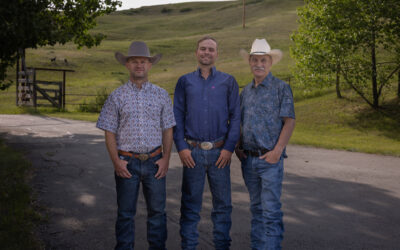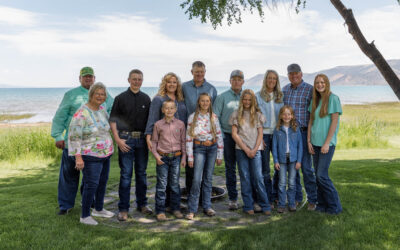
Hide color and end-product value
April 12, 2011
Animal scientist Ty Lawrence knows that it’s what’s under the hide that counts.
The West Texas A&M researcher was in a beef packing plant one night when he had a revelation: “I’m looking down the stun line and the cattle that were coming toward me were a Heinz 57 mix of hide colors,” he says. “Then immediately behind me I could see the carcasses going to the hotbox. My thought was, ‘There’s a tremendous perception of value differences of the live animals, but when they cross the grading rail, where the true carcass value is determined, those value differences are minimized.’”
So he and graduate student Tyson Brown set out on a yearlong Texas data collection project they recently published in The Professional Animal Scientist. They tracked hide color on 18,575 animals and matched that up with subsequent carcass information. The twelve color categories included everything from Holsteins and blacks to reds, striped and whites.
“The factors that influence feeder calf value are largely evaluated via visual appraisal,” Lawrence says. “And there’s a lot of bias and perception of live animal attributes, yet those expectations aren’t always met when you peel the hide away.”
When they calculated yield, quality and other premiums and discounts, there was only a range of $2.01 per hundredweight (/cwt.) from the lowest valued phenotype color to the highest.
Multiplying that times carcass weight showed a $30 difference in gross carcass value. Whites and blacks topped that at $983.76 and $982.51, respectively.
“The black and the white cattle were worth significantly more than the red, red-white-faced, spotted or striped cattle,” Lawrence says.
The take home message, he says, is that you can’t tell much by color alone.
“Color is less important and knowledge of the cattle background, history, level of finish, days on feed, etc.—all those things—are actually going to determine if this animal receives discounts or premiums,” Lawrence says.
Take the black example, for instance.
“Other breed types have entered with blacks,” he notes. “If you could go into that database and extract only the higher percentage Angus cattle, they would probably look better for quality grade. But this gets back to phenotype versus genotype [which was not part of the study]. When a cattle buyer is driving down the alley at a feedyard, he or she may have no more knowledge than what the feedyard tells them.”
The research also looked at sex and found heifers may be unfairly discounted in the sale barn. Feeding differences aside, their carcass market value was $122.70/cwt. versus $122.67/cwt. for steers.
“When you get to looking at the carcasses, it would be hard to discount a heifer for carcass performance,” Lawrence says.
You may also like
Zybach Angus Receives Certified Angus Beef Progressive Partner Award
Steve Zybach’s vision for smaller Angus producers to get more value for their calves through feeder calf sales with value-added programs led him to be recognized as the 2025 CAB Progressive Partner.
Cross Cattle Company earns Certified Angus Beef Canadian Commitment to Excellence award
Using disciplined breeding, genetics and hands-on management to raise Angus cattle that consistently hit high standards, Cross Cattle Company’s focus on quality earned them the 2025 Canadian Commitment to Excellence award.
Willis Ranch Earns Commercial Commitment to Excellence Award
Willis Ranch combines traditional stockmanship with modern genetic tools to produce cattle that thrive and meet high-quality carcass targets. Earning them the 2025 Commercial Commitment to Excellence award.



